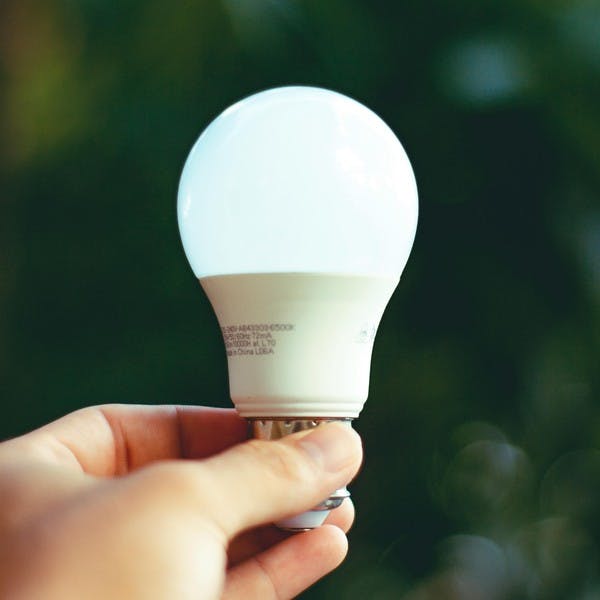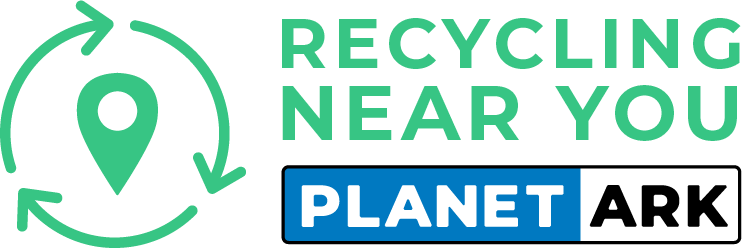Everything you need to know about recycling LEDs
FIND A RECYCLER
Learn more about recycling LEDs


How to recycle LEDs
LED (light-emitting-diode) bulbs are used for various types of lighting including the tiny light bulbs used in many electrical appliances such as TVs, computers, torches and indicator buttons. They are energy efficient, long-lasting, durable and free of mercury, lead and phosphorous. If they are recycled, they can have an even lower environmental impact.
Recycling options
- Some councils provide residents with permanent recycling drop-off locations or events for household items, and sometimes LEDs are accepted. Check with your council directly.
- Some recyclers may accept LEDs for recycling. Use the directory on this page to see if there is a recycler near you. Always call the recycler in advance to check if they will accept LEDs in small quantities.
Why recycle?
The materials inside LEDs are all recyclable. Recycling LEDs leads to the recovery of these materials for reuse in new products. This conserves our finite natural resources by reducing the need to mine for new or “virgin” materials, which in turn reduces greenhouse gases emissions.
What happens to them?
Used LED bulbs are crushed before the materials are separated into glass, aluminium and other materials. Crushed glass is recovered for reuse in other glass products.
Recycling other lights
Fluorescent tubes and lights, CFLs (compact fluoros), HIDs (high-intensity discharge lights) and metal halides can be recycled through special council, commercial or community programs. They should not be put in your household recycling or garbage bin because they contain toxic substances that are hazardous to the environment.
Fluorescent lights
Fluorescent light globes are the largest source of mercury contamination in municipal landfills. If recycled, however, mercury and other components can be safely recovered and reused to make valuable products.
Incandescent light bulbs
Incandescent light bulbs are inefficient and are being phased out by the Australia Government. Replacing incandescent bulbs can reduce energy and emission outputs and provide cost savings. They should be replaced with more efficient alternatives and then safely disposed.
Energy-efficient lighting
In Australia, lighting accounts for around 10% of the average household electricity budget. The popular uptake of light-emitting diodes (LEDs) is largely responsible for the reduction of lighting costs in recent years.
LEDs are better value and can be used in many existing fittings. LEDs use about 75% less energy than halogen light bulbs and last 5 to 10 times longer, greatly reducing replacement costs and the number of light bulbs ending up in landfill.
Frequently Asked Questions
How to dispose of light globes?
Light globes and bulbs should never be put in your recycling bin. Some kinds of light bulbs are safe to put in your garbage bin, but not all as many contain toxic substances that are harmful to the environment.
Older style incandescent globes and halogens are safe to put in your garbage bin. Wrap them in paper towel or tissues before putting them in the bin. Some recycling programs with drop-off locations may accept these types of globes – call in advance to check.
Fluorescent tubes, compact fluoros (CFLs), HIDs (high-intensity discharge lights) and metal halides are all hazardous types of lights that should not be put in your recycling or garbage bin. These lights can be recycled and safely disposed of through recycling programs that have drop-off locations. Use the information on this page to find a recycling location for light globes near you.
How to dispose of old light globes?
Older style incandescent globes and halogens are safe to put in your garbage bin, but not your recycling bin at home. Wrap them in paper towel or tissues before putting them in the bin. Some specialised programs with drop-off locations may accept these types of globes – call in advance to check.
Old fluorescent tubes, compact fluoros (CFLs), HIDs (high-intensity discharge lights) and metal halides are all hazardous types of lights that should not be put in your recycling or garbage bin. These lights can be recycled and safely disposed of through specialised programs that have drop-off locations. Use the information on this page to find a recycling location for light globes near you.
Are light globes recyclable?
Light globes cannot be recycled via your household recycling bin. If you put a light globe in your recycling bin at home, it will not be recycled and it could damage the other materials in your recycling bin, potentially preventing them from being recycled.
Some types of light globes can be recycled but they must be dropped off at recycling and safe disposal locations. Use the information on this page to find a recycling location for light globes near you.
Can light globes be recycled?
Light globes can be recycled, but only through specialised programs or recyclers. If you put a light globe in your recycling bin at home, it will not be recycled and it could damage the other materials in your recycling bin, potentially preventing them from being recycled.
To recycle a light globe, it must be dropped off at recycling and safe disposal locations. Use the information on this page to find a recycling location for light globes near you.
How to recycle light globes
The method for disposing of light globes in Australia depends on the type of globe.
Incandescent and halogen globes:
- Halogen and incandescent lights have a heating filament enclosed in glass, usually in a traditional light globe shape.
- They are generally safe to dispose of in your regular garbage bin. For safety, wrap the globes in paper or tissue and put them inside a bag before putting them in the bin.
- While these globes can be recycled, the process is often not cost-effective, so many recycling programs or facilities do not accept them.
- Both halogen and incandescent globes are being phased out in many countries due to their lower energy efficiency compared to newer LED and CFL options. They are often not accepted in recycling programs, but it is safe to put them in your garbage bin at home.
Fluorescent (CFL) and LED globes:
- Fluorescent lights come in different shapes and sizes. There are long fluorescent tubes and smaller, spiral-shaped bulbs designed to fit standard light fixtures.
- They contain hazardous materials and should be dropped off for recycling or safe disposal. Do not put these lights in your recycling or garbage bins.
- Many councils have specific programs for recycling fluorescent or LED lights. Check directly with your council.
- Use the directory on this page to see if there is a drop-off point near you.
Where to recycle light globes
While incandescent and halogen globes can generally be disposed of in your regular garbage bin, fluorescent and LED globes contain hazardous materials and should be dropped off for recycling or safe disposal.
Australia has specific regulations and recycling programs in place for handling hazardous waste, including fluorescent lights. It's important to follow local guidelines to ensure proper disposal and protect the environment.
Here are some ways to find a recycling location for your light globes:
1. Check with Your Local Council: Many councils have specific programs for recycling light globes. Contact your local council to find out their guidelines.
2. Use the directory on Recycling Near You: Use the directory on this page to see if there is a drop-off location near you.







